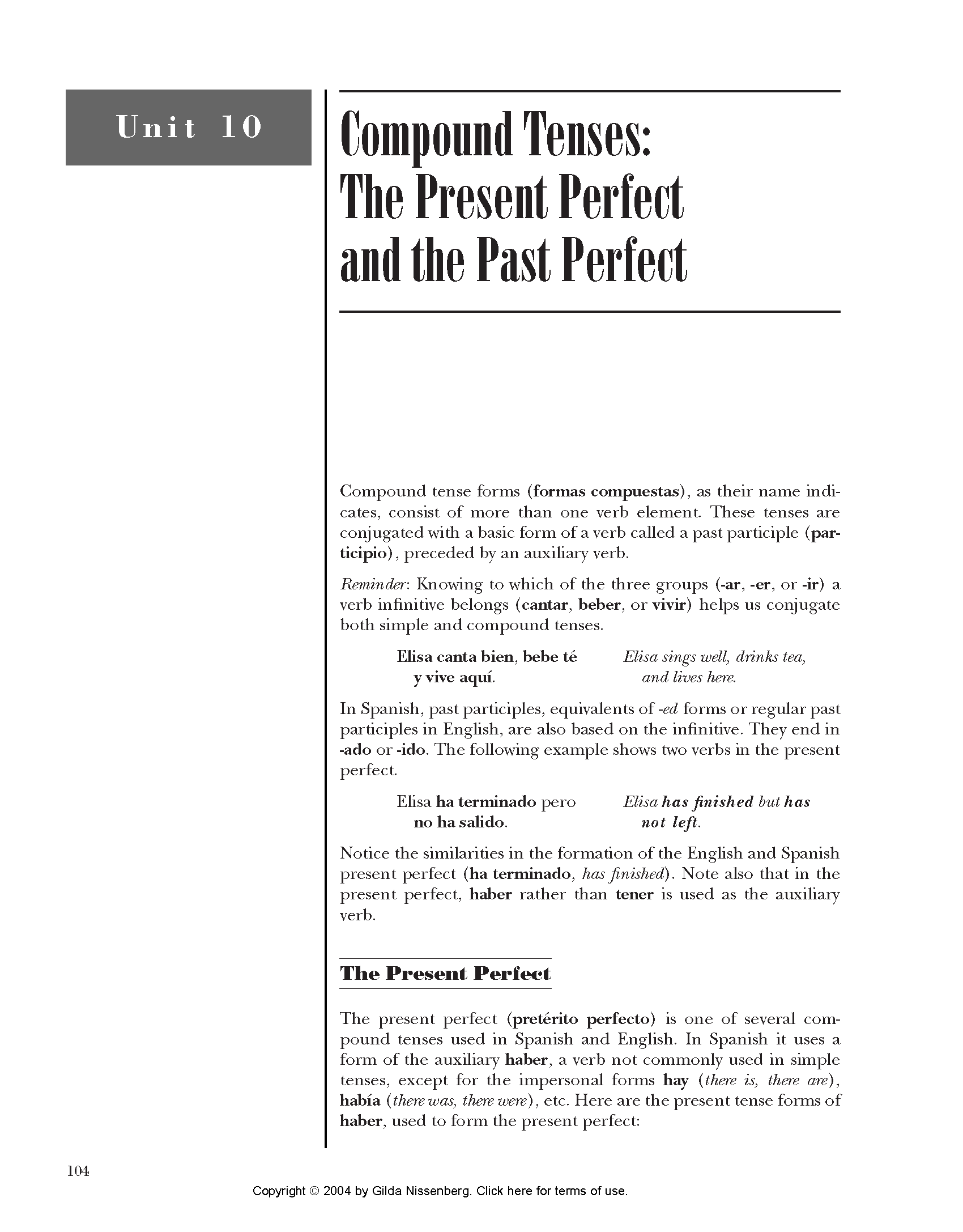CSG115

Unit 10
Compound Tenses: The Present Perfect and the Past Perfect
Compound tense forms (formas compuestas), as their name indi-cates, consist of morę than one verb element. These tenses are conjugated with a basie form of a verb called a past participle (par-ticipio), preceded by an auxiliary verb.
Reminder: Knowing to which of the three groups (-ar, -er, or -ir) a verb infinitive belongs (cantar, beber, or vivir) helps us conjugate both simple and compound tenses.
Elisa canta bien, bebe te Elisa sings well, dńnks tea, y vive aqui. and lives here.
In Spanish, past participles, equivalents of -ed forms or regular past participles in English, are also based on the infinitive. They end in -ado or -ido. The following example shows two verbs in the present perfect.
Elisa ha terminado pero Elisa has finished but has nohasalido. not left.
Notice the similarities in the formation of the English and Spanish present perfect (ha terminado, has finished). Notę also that in the present perfect, haber rather than tener is used as the auxiliary verb.
The Present Perfect
The present perfect (preterito perfecto) is one of several compound tenses used in Spanish and English. In Spanish it uses a form of the auxiliary haber, a verb not commonly used in simple tenses, except for the impersonal forms hay (there is, there are), habia {therewas, there were), etc. Here are the present tense forms of haber, used to form the present perfect:
Copyright © 2004 by Giida Nissenberg. Ciick here for terms of use.
104
Wyszukiwarka
Podobne podstrony:
CSG126 Unit 11Compound Tenses:The Fntnre Perfect and tlie Conditional Perfect The Futurę Perfeet In
CSG142 Unit 13The 8ubjunotive Mood:The Present and the Present Perfect Subjunctive Tenses in No
więcej podobnych podstron